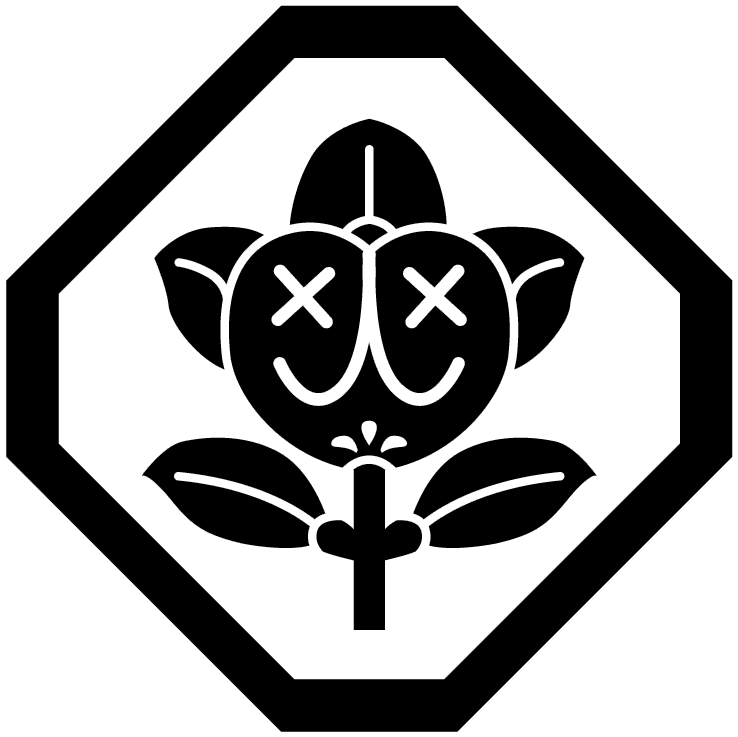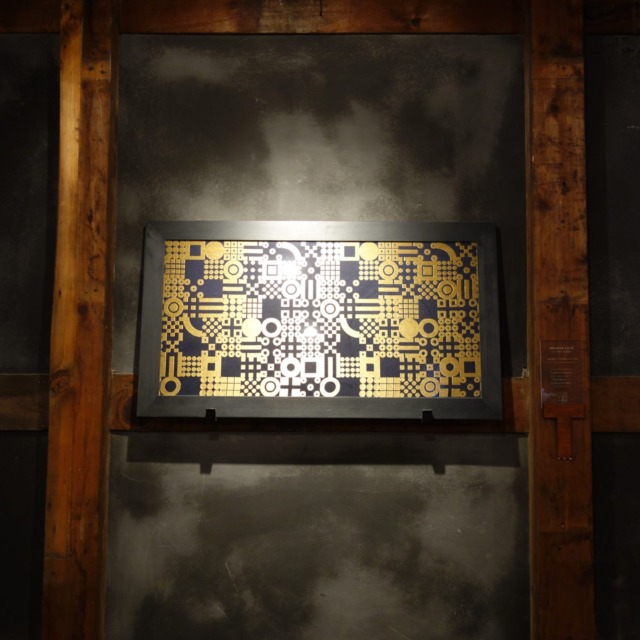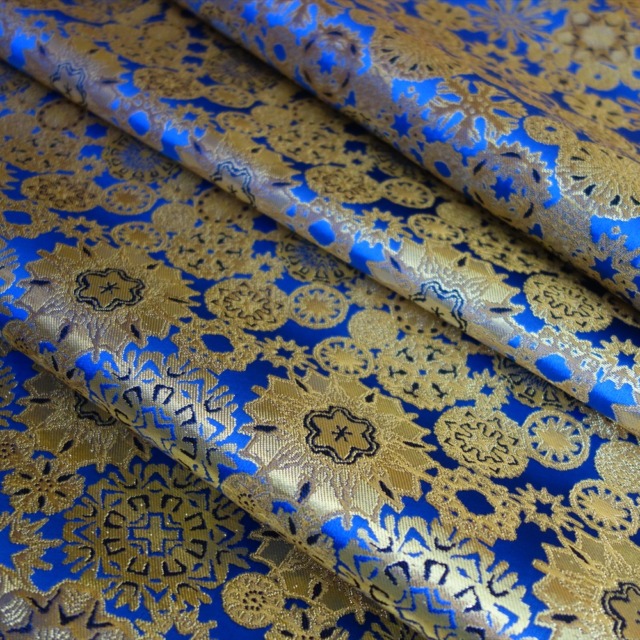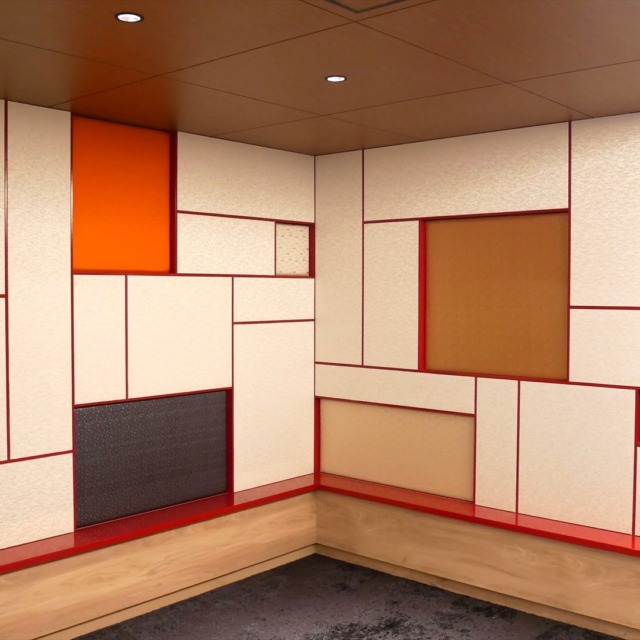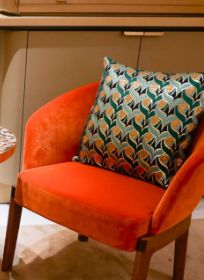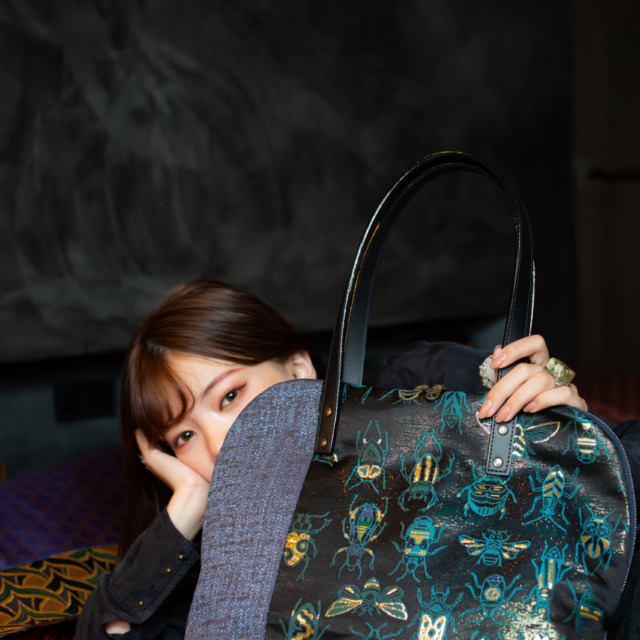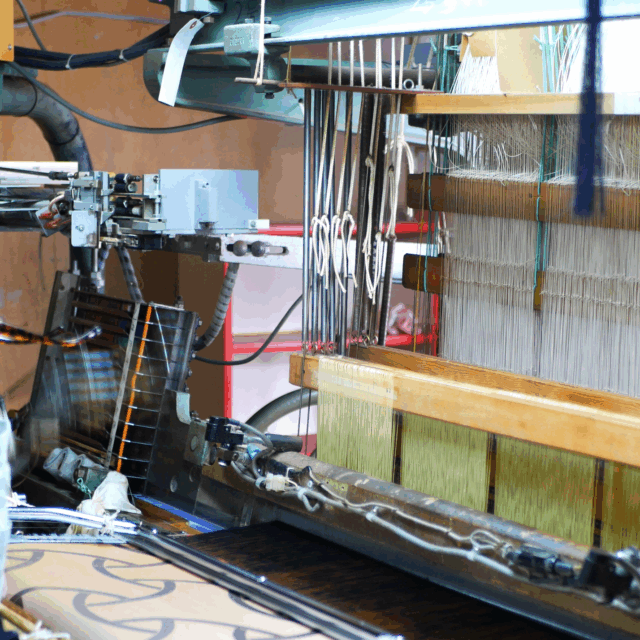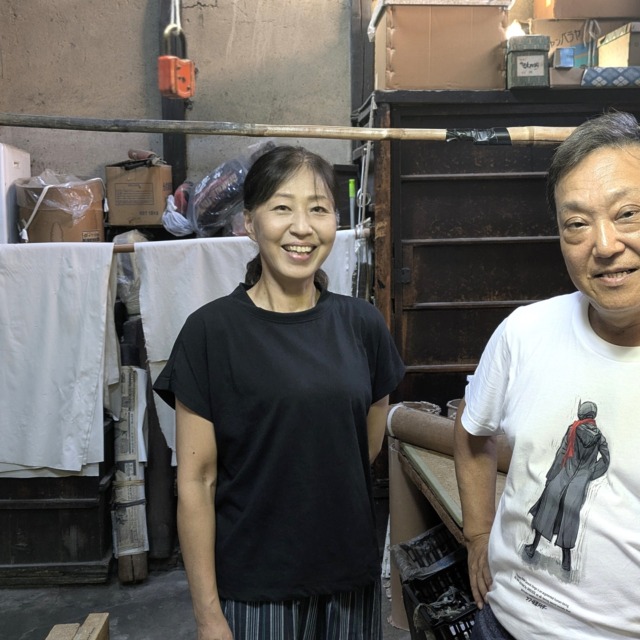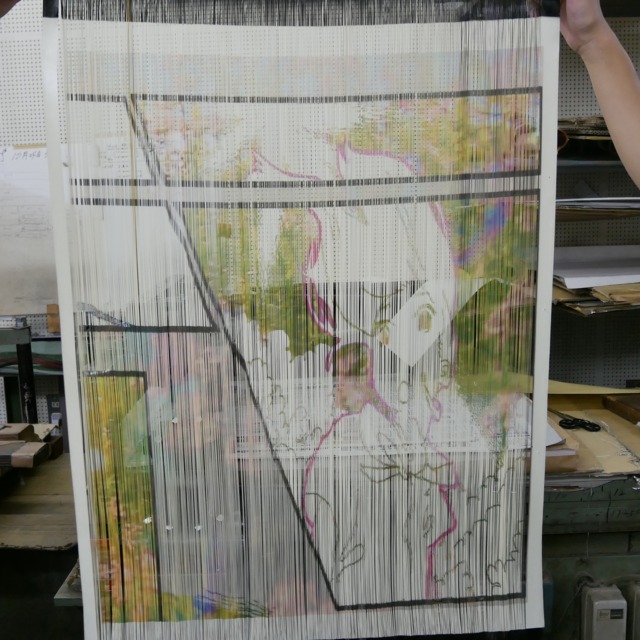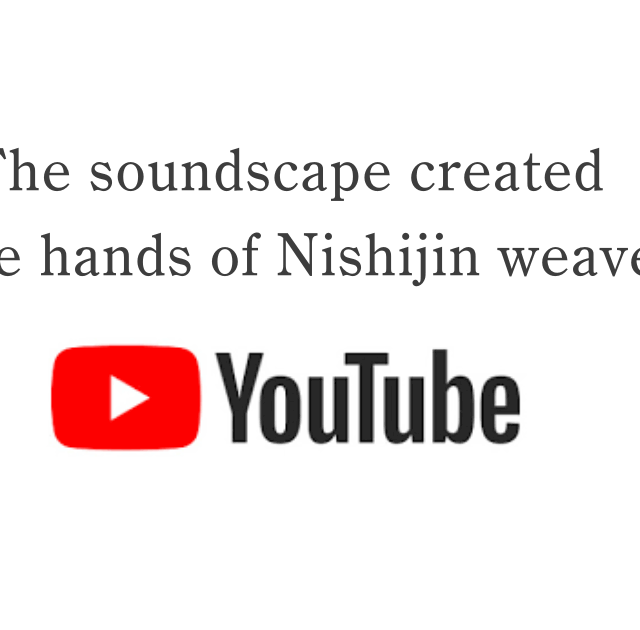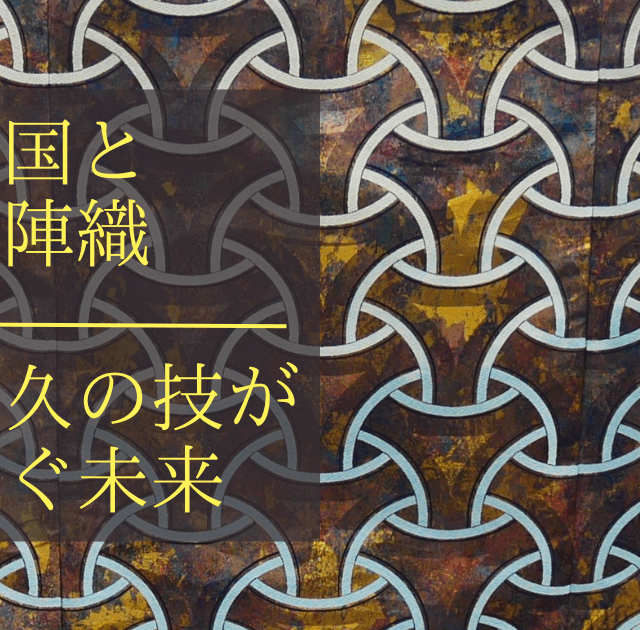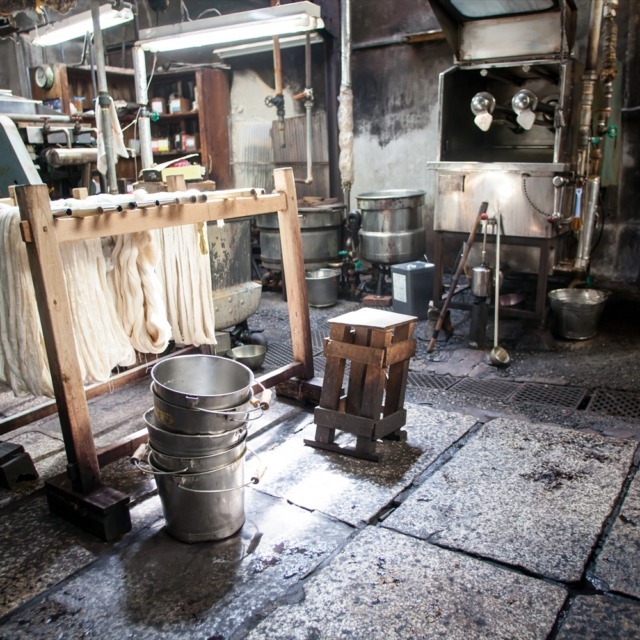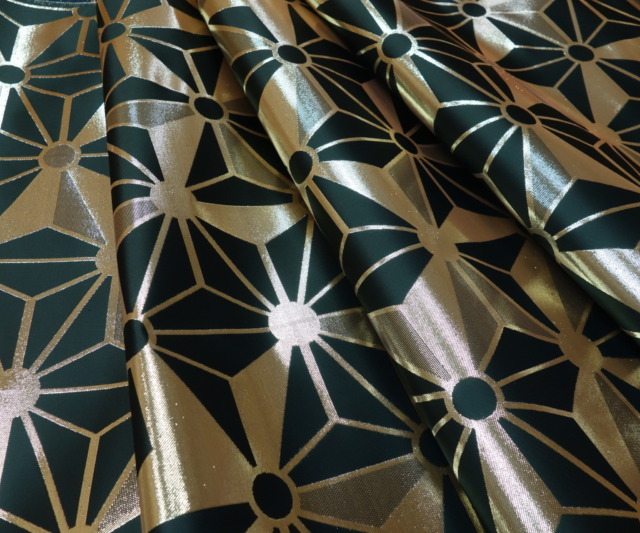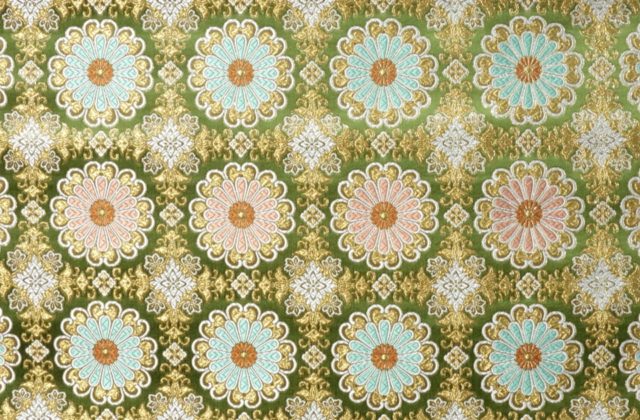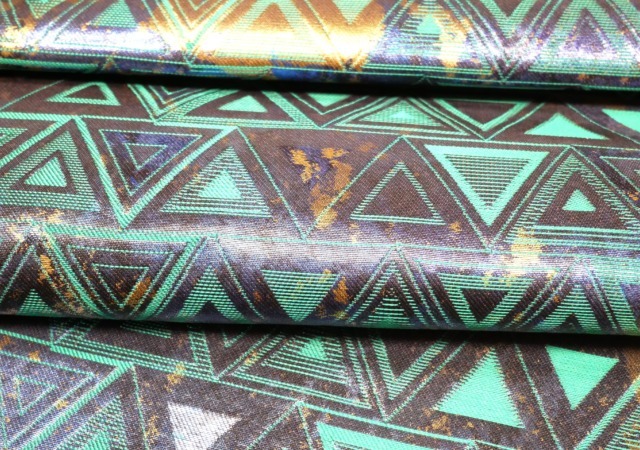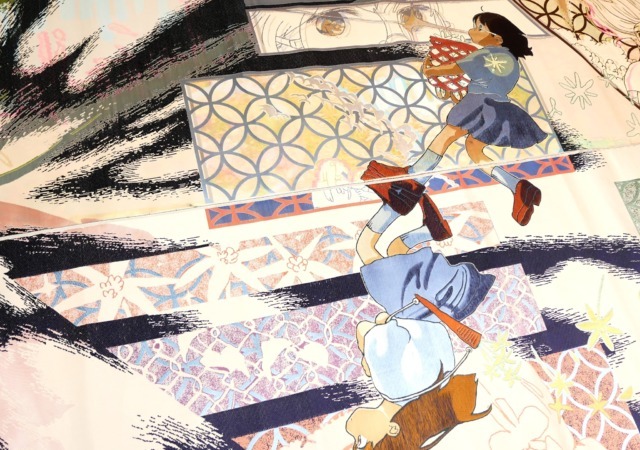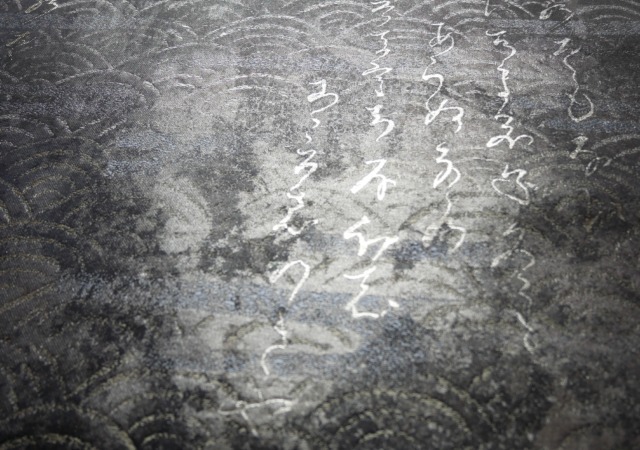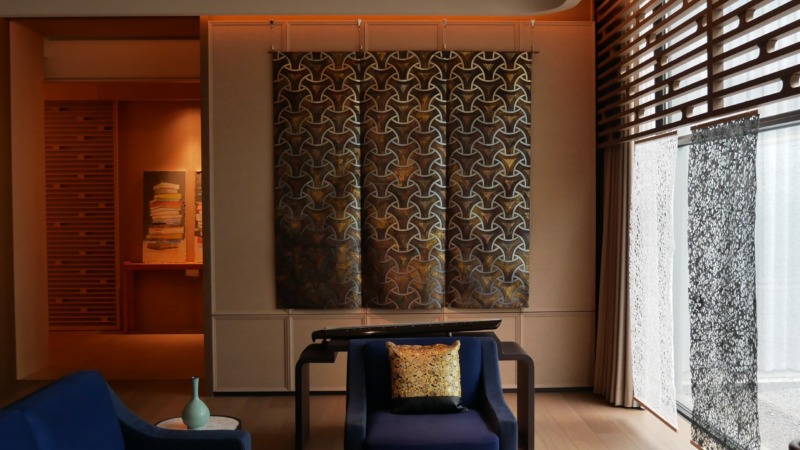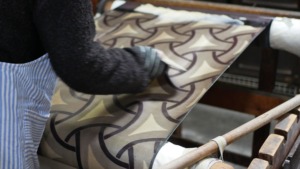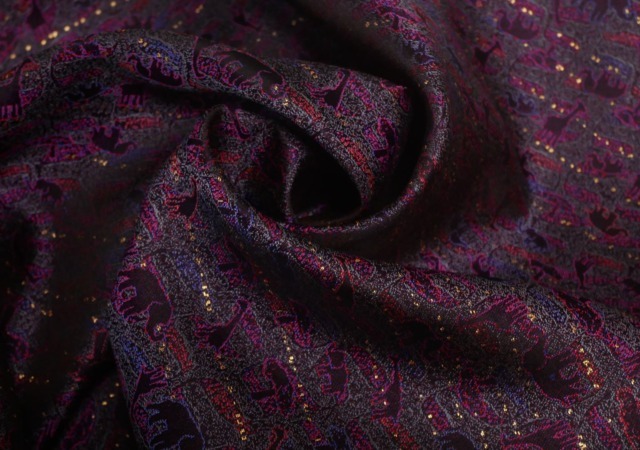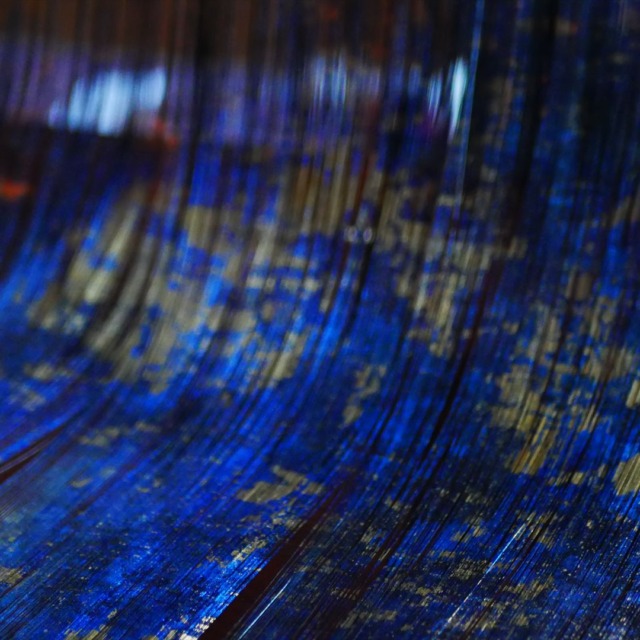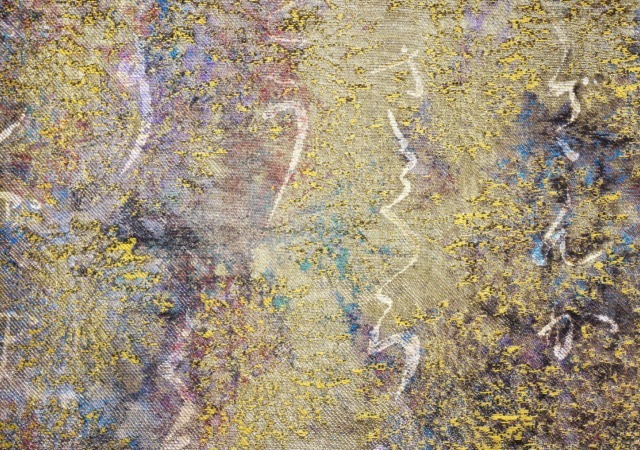How the “Nishijin Kinran brocade tapestry” is completed
【History and Tradition】
Since our founding, we have carefully preserved the traditional weaving technique known as “Hikibaku,” which uses short and flat threads made from Washi paper, lacquer, and genuine gold leaf. We produce numerous silk textiles that extensively use “Genuine Hikibaku” or “Genuine Patterned Foil.”
Although the technique of Hikibaku originated from China, it is now a unique and profound weaving method practiced only in Nishijin and some parts of Tango.
As the demand for Hikibaku products has decreased over time, it has become uncertain how long we will be able to obtain the “foil thread” used in our beloved weaving technique.
Therefore, we believe that promoting the weaving technique of Hikibaku more prominently, making it widely known, and discovering new demand will help preserve Hikibaku for future generations.
【All-Silk Nishijin Brocade Gold Silk Pearl Powder Genuine Silver Foil Patterned Hikibaku Tapestry with Spinning Top Pattern】
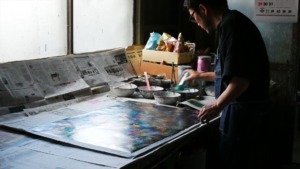 |
Foil threads Rakugei Kobo https://rakugei.jp/We custom-ordered foil threads made from Washi paper, genuine silver, and pearl powder from Rakugei Studio, which has continued to produce foil threads for obi.
|
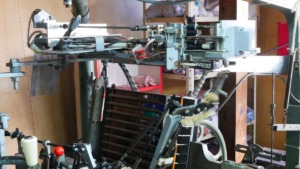 |
Production Supervision, Design, Pattern Design, and Weaving.Nishijin Okamoto Okamoto Orimono Co., Ltd https://okamotoorimono.com/The “spinning top pattern,” which depicts the continuous spinning of tops, has been redesigned and transformed into a pattern. Using foil thread on a shuttle loom equipped with a Hikibaku device, we employ a weaving method known as “junbiki,” which resembles ikat. This method involves weaving each thread sequentially to ensure the pattern does not shift. The structure is designed to create varying intensities in the appearance of the patterned foil, and additional depth is achieved by layering patterns woven with a Jacquard loom. |
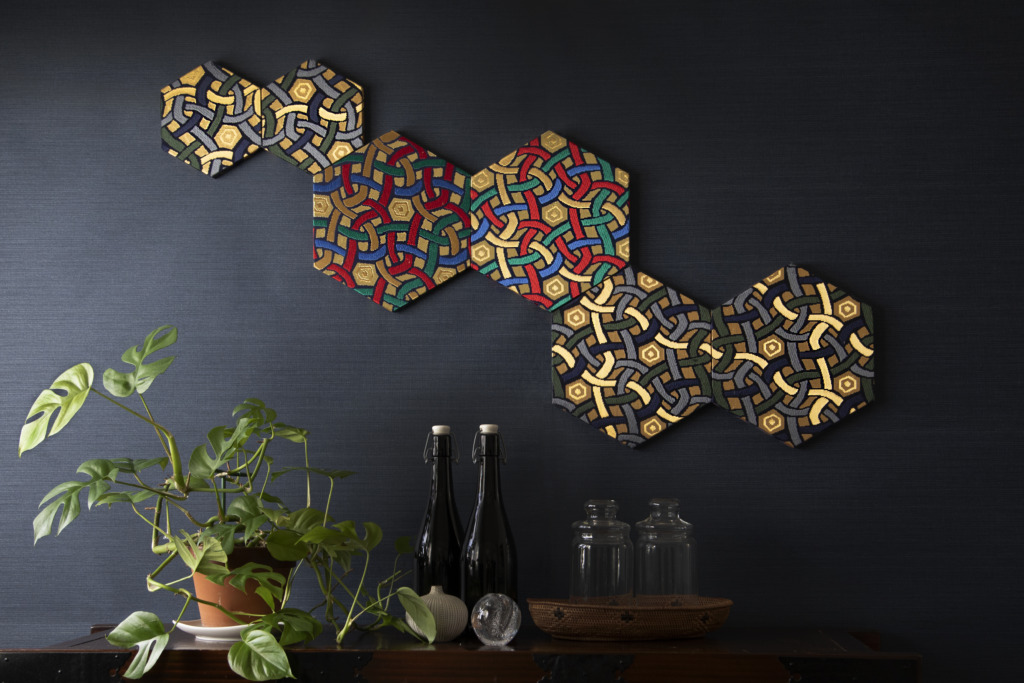 |
Sewing by Yoshino https://www.instagram.com/yoshinoshigeko/Sewing by Yoshino, who specializes in making Buddhist robes using Kinran fabric, pure silk, and hemp. |
We cherish the techniques and materials inherited from our ancestors in Kyoto and the Nishijin area, and we will continue to protect and preserve Nishijin brocade gold silk.
*At Nishijin Okamoto, we see it as our mission to not only increase traditional work for various traditional craft companies but also create new jobs. If you need any craftsmen, please feel free to contact us.
